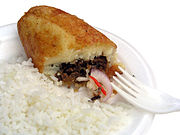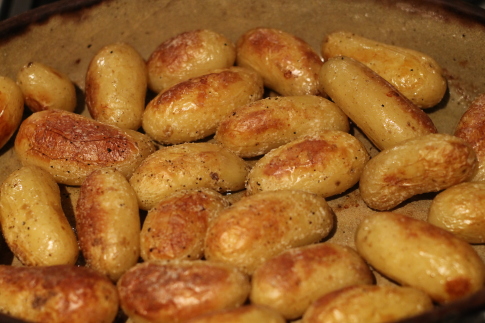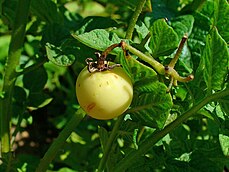Description
🚚 The Fastest Delivery Time : 2-5 delivery. It takes 3-5 days to order. If out of stock, there may be an opportunity to switch to other varieties.
🐝 Supplier / Place Of Origin:Australia
🔖 Certification:Australia Organic
🌱 About the Producer:
The farmers led by an expert and qualified team, we can offer a wide range of fruits and vegetables, guaranteed Quality and traceability of all products.
All our producers operate under strict certified regulations and work under the ongoing support and control of expert agronomists.
We select our suppliers for the love they put in their products, seeking the best quality while respecting traditional production methods.
Most of them are family owned, of human size. We value the direct collaboration with them.
By buying directly at the source, we are proud to contribute to the local economy, while ensuring that, ultimately, our clients get the most tasty and fresh products at the best prices.
🌱 Supplier Products:
🛍 Product Information (Main) (English):
Description/Taste
Yellow creamer potatoes are small in size and are round to oval in shape, averaging 2-3 centimeters in diameter. The thin, smooth skin is tan to light gold, and there are some light brown speckling and a few shallow eyes scattered across the surface. The firm flesh is pale yellow to gold, dense and slippery, and boasts a waxy texture. When cooked, Yellow creamer potatoes have a velvety texture with a buttery flavor primarily due to its reduced starch content.
Seasons/Availability
Yellow creamer potatoes are available year-round.

Nutritional Value
Yellow creamer potatoes are an excellent source of vitamin C, fiber, potassium, and flavonoids such as anthoxanthin, which gives the potato its yellow color and provides some antioxidants.
Applications
Yellow creamer potatoes are best suited for cooked applications such as roasting, boiling, mashing, or grilling. Their waxy texture makes them ideal for potato salads or placed into soups, stews, curries, and chowders. Incredibly versatile, these potatoes can also be boiled and mashed or used to make gratins, hash browns, and purees. Yellow creamer potatoes are commonly roasted and smashed for a crispy and creamy side dish. Yellow creamer potatoes pair well with bacon, olive oil, herbs such as rosemary, thyme, oregano, sage, tarragon, and basil, chives, meats such as fish, poultry, beef, and pork, and vegetables such as green beans, asparagus, Brussel sprouts, and a green salad. They will keep for a couple of weeks when stored in a cool, dry, dark place. Yellow creamer potatoes should not be refrigerated as flavor and composition will be lost.
🥗 Product Category (English):
Cool season 🥕🥔🧅🥦 vs warm season vegetables 🥬🥒🌽🌶
We’ve broken down some of Australian seasonal fruit and vegetables by month to help you figure out what vegetables are in season now.
Summer – December, January and February
As temperatures rise, so does the range of nutritious and vibrant vegetables on offer. Why not grill some eggplant, zucchini or asparagus at your next summer barbeque?
Because we all know the health benefits of eating raw vegetables, be sure to layer with fresh greens like crisp cucumber and crunchy iceberg lettuce.
Autumn – March, April and May
Members of the brassica family, broccoli and cauliflower, are extremely versatile and nutrient-dense vegetables that reach their peak availability in autumn.
Whether you want to break them up into florets or prepare them whole, be sure to season with plenty of garlic and spices to create a mouth-watering addition to your meal.
Winter – June, July and August
🥘 How to cook new potato?
Culinary
In the UK, potatoes are part of the traditional dish of fish and chips. Roast potatoes are often part of the Sunday roast dinner, and mash is a main component of several other traditional dishes, such as shepherd's pie, bubble and squeak, and sausage and mash. New potatoes can be cooked with mint and are often served with butter.
In Germany, Northern Europe (Finland, Latvia, especially the Scandinavian countries), Eastern Europe (Russia, Belarus and Ukraine) and Poland, newly harvested early-ripening varieties are considered a special delicacy. These "new potatoes" are cooked whole and served with unpeeled dill, traditionally served with Baltic herring. Pudding made from grated potatoes (kugel, kugelis and potato babka) is a popular food in Ashkenazi, Lithuanian and Belarusian cuisine. [Cepelinai, the national dish of Lithuania, are dumplings made of cooked, grated potatoes, usually stuffed with minced meat.
In the Friuli region of Italy, potatoes are used to make a type of pasta called gnocchi. Potatoes are used in northern China, where rice is not easy to grow, and a popular dish is green pepper potato shreds (qīng jiāo tǔ dòu sī), made from green peppers, vinegar and potato flakes.
In winter, roadside vendors in northern China sell baked potatoes.
🥔 Roasted Pommes de Terre Grenailles

Fingerling or new potatoes can be roasted in exactly the same way.
🥔 Roasted potatoes
Ingredients
- Count 7 ounces (200 g) potatoes per person, washed, left unpeeled
- Olive oil
- Sea salt
- Freshly ground black pepper
Instructions
Preheat the oven to 375°F/200°C. Wash the potatoes thoroughly.
Put the potatoes in a pot, cover with cold water and add a teaspoon of salt. Place the pot on the stove over a high flame and bring to a boil. As soon as the water begins to boil, reduce the heat and simmer until the potatoes are just tender, 10 to 15 minutes.
Strain the potatoes and immediately spread them out, in a single layer, in a roasting pan: this will allow the moisture to evaporate and the skin to dry. After 3 to 4 minutes, generously dribble olive oil over the still warm potatoes, then sprinkle with salt and freshly ground pepper. Shake the pan to make sure all the potatoes are evenly coated with oil and seasoning.
Place the pan in the oven and roast the potatoes 15 – 20 minutes, taking them out and tossing them halfway through the cooking time. Remove from the oven and serve hot.
Toxicity
Some toxic
solanine-rich parts of
S. tuberosum
Raw potatoes contain toxic glycoalkaloids, of which the most prevalent are solanine and chaconine. Solanine is found in other plants in the same family, Solanaceae, which includes such plants as deadly nightshade (Atropa belladonna), henbane (Hyoscyamus niger) and tobacco (Nicotiana spp.), as well as food plants like tomato. These compounds, which protect the potato plant from its predators, are especially concentrated in the aerial parts of the plant. The tubers are low in these toxins, unless they are exposed to light, which makes them go green.
Exposure to light, physical damage, and age increase glycoalkaloid content within the tuber.[108] Different potato varieties contain different levels of glycoalkaloids. The 'Lenape' variety, released in 1967, was withdrawn in 1970 as it contained high levels of glycoalkaloids. Since then, breeders of new varieties test for this, sometimes discarding an otherwise promising cultivar. Breeders try to keep glycoalkaloid levels below 200 mg/kg (0.0032 oz/lb). However, when these commercial varieties turn green, their solanine concentrations can go well above this limit, with higher levels in the potato's skin.
In addition, you can refer to this article for sprouted potato is edible or not:
Google Recipe 🔍 :

English CookPad 🍳 :

BBC Good Food 🥙 :


























